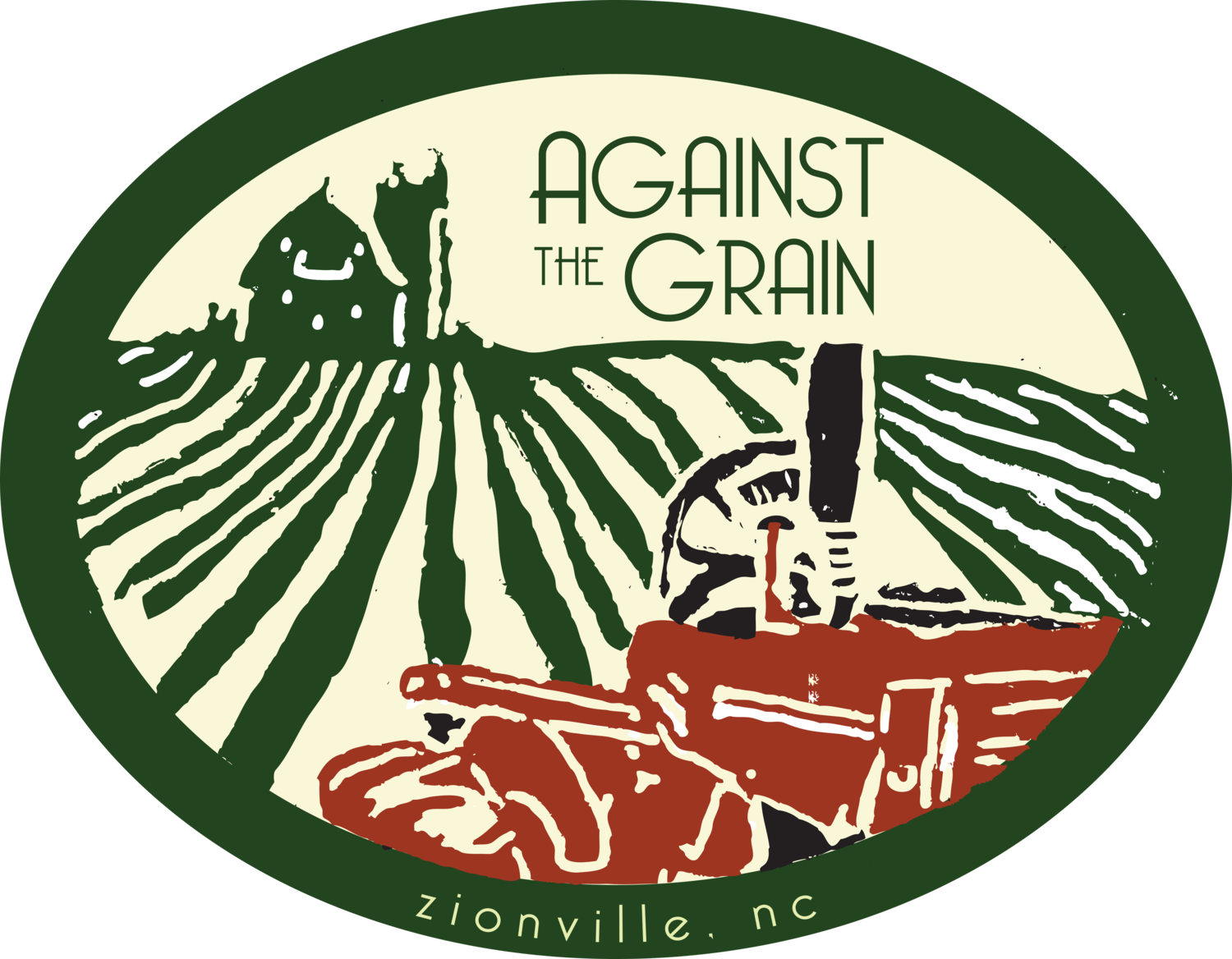Some of the big news on the farm this week is that the sorghum crop is finally in the ground and the garlic is drying in the tobacco barn! Garlic is a crop that really highlights the cyclical and holistic characteristics of Against the Grain's farm organism. To start, the garlic is planted every fall using the largest cloves from the previous season's crop. The farm has been expanding its garlic planting stock since 2010, when Holly traded some goat cheese for the original seed. In order to prepare the ground for planting in October, we typically plant buckwheat in August in a field that was previously planted in spring vegetables. As the buckwheat grows, it provides cover for the soil and food for the honey bees and other pollinators. Once the nectar flow is finished, usually sometime in September, we pull the turkey tractors over the buckwheat, allowing the turkeys to forage on the cover crop and deposit their phosphorus-rich manure that is so beneficial to root crops like garlic. (As a side note: we typically keep animals and vegetables separate on the farm for food safety reasons, but the garlic won't be harvested for another 9 to 10 months after the turkeys have been allowed to forage in the field. This is 5 to 6 months longer than the USDA requires under the National Organic Program.)
After the turkeys have done their work, we disc the soil lightly to incorporate the manure and then immediately cover the field with a silage tarp until we're ready to plant. The tarp acts to hold the nutrients from both the manure and the decomposing cover crop in the soil, where they will be most beneficial for the upcoming crop. Halloween is our target date for getting garlic in the ground, but anytime until the ground freezes solid is a fine time to plant. In the days leading up to planting, we choose our biggest heads from the previous years' crop and separate each clove from the main head. This takes a little bit of time, but is a fun, fall activity. On planting day, we pull the tarp off of the field, shape the beds, amend with compost and lay off rows for planting the bulbs. We plant by hand, but many hands make light work and as long as the weather cooperates, we can usually get the field planted in a day. Once all the garlic is snug in the soil, we mulch the field with straw in order to protect the crop through the winter and to smoother weeds the following spring.
The garlic plants will poke up through the straw in the early spring the following season. In a typical year, we don't have to manage the garlic too much once it's been planted, and instead focus on harvesting green garlic and scapes in the months leading up to the solstice. The longer days trigger the garlic to form heads or bulbs, and once bulb formation is complete, it's time to harvest the crop. We bundle the garlic into bunches of 10 and hang the bundles in the old tobacco barn on the farm to dry.
Garlic has amazing health benefits and is known to be both anti-bacterial and anti-fungal.ccOf course, it's also a culinary super star, complimenting everything from pork sausage to eggplants.ccGarlic is a solid crop for the farm from a financial perspective, making it a cornerstone of the farm's balance sheet. In all of these ways and more, garlic contributes to the social, biological and financial health of the farm and WE LOVE IT!
